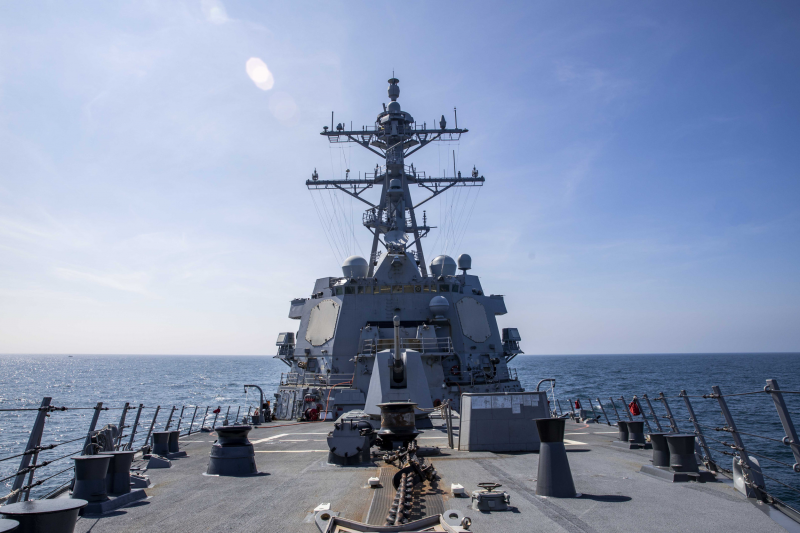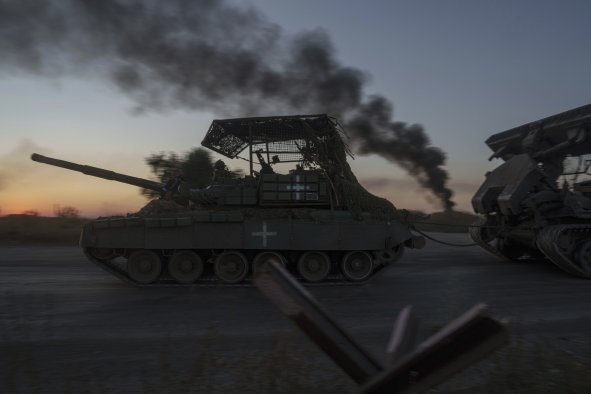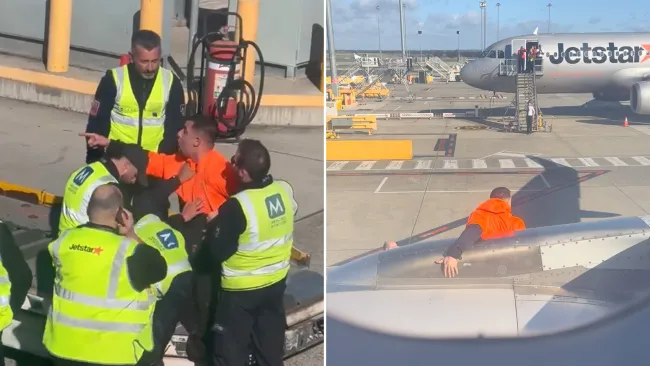A United States destroyer passed through the Taiwan Strait on Thursday after more than a three-month hiatus, the navy said. The Chinese military said that its forces have monitored the warship's transit.
USS Ralph Johnson, an Arleigh Burke-class destroyer armed with a naval artillery gun and up to 96 missiles, conducted what the U.S. Navy called "a routine transit." The 110-mile-wide waterway separates China and Taiwan, a self-ruled island but viewed by Beijing as a breakaway province.
"The ship transited through a corridor in the strait that is beyond the territorial sea of any coastal state," the U.S. Navy said in a statement. It added that the warship transited through waters where "high-seas freedom of navigation and overflight apply in accordance with international law."
 In Focus
In Focus
U.S. Navy Destroyer Transits Taiwan Strait
U.S. Navy destroyer USS Ralph Johnson conducts routine underway operations in the Taiwan Strait on August 22. Launch Slideshow 4 PHOTOSChina has long claimed it has "sovereignty, sovereign rights, and jurisdiction" over the Taiwan Strait, but the U.S. and its allies, including Taiwan, say that the narrow waterway is international waters.
Li Xi, spokesperson for China's Eastern Theater Command, said on Thursday that the U.S. made "a public fuss" over the transit. He added that Chinese air and naval forces monitored the warship in accordance with law, and troops are on high alert to defend the country's sovereignty and security.
The Eastern Theater Command's area of responsibility includes the Taiwan Strait, where it deploys multiple military aircraft and warships on a daily basis. Beijing continued to pile military pressure on the island as it has refused to renounce the right to use force to resolve any cross-strait issue.
The U.S. Navy said the recent transit in the Taiwan Strait demonstrated Washington's commitment to upholding the principle of freedom of navigation. "No member of the international community should be intimidated or coerced into giving up their rights and freedoms," the statement reads.
A Taiwan Defense Ministry spokesperson told Newsweek that a U.S. warship transited the strait northward as the island's military had full control over the surrounding sea and airspace.
The U.S. military aircraft and vessels routinely transit the Taiwan Strait as a support to the Taiwanese. The transit used to be conducted monthly, either as a unilateral operation or carried out with Canada, but the last one was carried out on May 8 by USS Halsey, a sister ship of the Ralph Johnson.
The last transit made by foreign armed forces was on July 31, when Royal Canadian Navy frigate HMCS Montréal sailed through the waterway from north to south. Germany, meanwhile, has yet to decide whether two of its naval vessels would conduct a transit in September, Reuters reported.
Open-source flight data showed that when the Ralph Johnson passed through the Taiwan Strait, a U.S. Air Force RC-135W "Rivet Joint" reconnaissance aircraft provided support to the destroyer from the south of the strait. It was departed from Kadena Air Base on Japan's Okinawa Island.
A day before its transit in the Taiwan Strait, the Ralph Johnson operated near another two major waterways in the region—the Miyako Strait and Luzon Strait, photos published by the U.S. Navy showed. This implied that the warship likely made a clockwise circumnavigation sailing around Taiwan.
The Miyako Strait forms the so-called first island chain that starts from Japan in the north and extends southward to Taiwan and the Philippines. It is one of the major gateways for the Chinese navy and air force in the event of deployment to the Philippine Sea and the wider Pacific Ocean.
Another gateway for the Chinese military is the Luzon Strait. It lies between Taiwan to the north, the Philippines to the south, the South China Sea to the west, and the Philippine Sea to the east.
The U.S. Indo-Pacific Command forces performed operations in and around critical sea passages and trade thoroughfares to deter threats, the captions read. Photos also revealed the Ralph Johnson conducted combined operations near the Miyako Strait with amphibious assault ship USS America.
F-35B "Lightning II" stealth fighter jets were deployed aboard the America. They were loaded with air-to-air missiles on the flight deck when the ship was in the vicinity of Miyako Strait on Wednesday. These aircraft provided fifth-generation strike capability in key maritime terrain, the captions say.
Disclaimer: The copyright of this article belongs to the original author. Reposting this article is solely for the purpose of information dissemination and does not constitute any investment advice. If there is any infringement, please contact us immediately. We will make corrections or deletions as necessary. Thank you.





